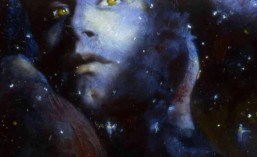About four years ago I was part of a pioneering group that typed text to create pictures using a catalog of images and textures. It was a clumsy and tedious process that produced strikingly similar work and ultimately held my interest for only a short time. But technology moves fast. The past year has seen a proliferation of sophisticated artificial intelligence (AI) text-to-image programs that will blow your mind and make you worry about the future of artists. Illustrators and graphic artists may as well surrender their aspirations or learn to code. Online programs such as Stable Diffusion, Dall-e 2, Wombo, Pixray, Canva, Starryai and others create art out of words better than any stable of Chinese slave artists I have ever tried to liberate. Any style, any topic – the variety and sophistication of the art is incredible. These are no longer just simple art filters (Texture, ‘Watercolor’, Pixelate etc.) included in popular graphics programs like Adobe Photoshop or Corel Draw and ‘mapped’ over personal images or photographs… these are full art styles applied to an image derived solely from a written description. Nor are they popular app filters like Pixma, Toonme, or Deep Art Effects, that need you to provide a base photograph or image to apply their styles – just words will do. Much has been made of a prize won by an AI-generated ‘photograph’ this past August in Texas but the distinction between human and computer creativity has never been thinner, and more examples are bound to arise – that is if they are revealed, because there is little to distinguish one from the other. Of course these text-to-image programs rely (like my prior experience) on a database of visual images created in the past by human artists – but the variety derived from this trove is unique to the text proposed and the genesis of the image is generally hidden from the author. Technology has their bots recycling old art but seems incapable of creating new movements or aesthetics like groups of artists have in the past. Of course nowadays many artists cycle between past styles and ‘appropriate’ images from other artists with impunity – and in doing so erase acceptance of the same from artificial intelligence. It seems contemporary art is presently stuck in a vicious circle of refinement and regurgitation. Meanwhile, the bots match our most famous examples in the visual arts… and from the fringes wear down and corrupt the inspiration of emerging artists and any originality they can dream of inventing.
